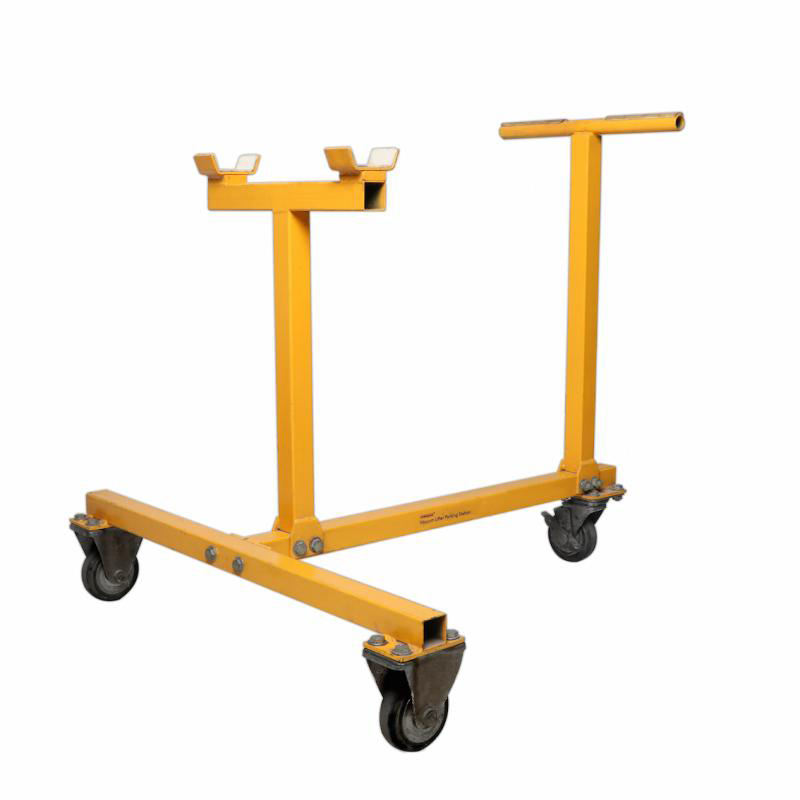Expert Guide to Systems, Equipment, and Best Practices for Maximum Efficiency
In the world of warehousing and logistics, material handling is the foundation that supports every efficient, safe, and cost-effective operation. As warehouses evolve with modern technology and rising customer expectations, the importance of robust material handling strategies and equipment has never been greater. But what does material handling really mean in the warehouse context—and how can companies leverage best practices for optimum performance?

Table of Contents
ToggleUnderstanding Material Handling in Warehouse
Material handling in a warehouse covers the entire process of moving, storing, protecting, and controlling goods and materials throughout their journey in the facility. From receiving shipments at the dock to storing inventory, picking orders, staging for shipment, and dispatch, every movement is part of a broader material handling strategy. To master these processes is to unlock significant gains in productivity, safety, and bottom-line results.
For a comprehensive introduction, see What Is Material Handling?
Why Is Material Handling Crucial in Warehousing?
Efficient material handling determines:
- How quickly products can be stored, found, picked, and shipped
- The safety and well-being of warehouse staff
- The rate of damaged, misplaced, or lost items
- Labor and operational costs
- The overall ability to serve customers reliably and fast
Main Functions of Material Handling in Warehouse
- Receiving and Unloading:
Goods must be efficiently unloaded, checked, and recorded in inventory—often with forklifts, pallets, carts, or hoists and cranes. - Material Storage Solution:
Optimized storage—using racks, shelves, bins, and automated systems—maximizes space and keeps inventory accessible. - Internal Transportation:
The movement of goods within the warehouse is performed with forklifts for construction, conveyors, hand trucks, or advanced Vacuum Lifters. - Order Picking and Staging:
Efficient picking systems ensure the right goods are retrieved and moved to shipping zones. - Shipping and Dispatch:
Items are prepared for outbound transport, minimizing mistakes and damage.
Types of Material Handling Equipment in Warehouse
- Manual Tools:
Wheelbarrows, hand trucks, pallets, carts - Motorized and Mechanized Equipment:
Forklifts for construction, electric pallet jacks, hoists and cranes, conveyors - Automated Solutions:
Vacuum Lifters, AGVs (Automated Guided Vehicles), robotics, AS/RS (Automated Storage and Retrieval Systems) - Specialized Equipment:
Aardwolf Slab Lifters for safe handling of stone, glass, or large panels
Discover more at Material handling Equipment and best selection practices at Material-handling Equipment.
How Material Handling Optimizes Warehouse Operations
1. Reducing Labor Costs:
Automation and mechanized handling equipment reduce manual work, allowing fewer people to move more goods faster.
2. Improving Safety:
Using the right tools—such as Jib Cranes, conveyors, and ergonomic carts—minimizes lifting injuries, falls, and equipment collisions.
3. Increasing Productivity:
Faster, more reliable internal flows translate to higher throughput and better customer service.
4. Minimizing Material Waste:
Careful storage and proper handling reduce product damage, spoilage, and loss.
5. Boosting Warehouse Space Utilization:
Optimized storage solutions and equipment allow more inventory to be stored in the same footprint.
For deeper strategies, read What Is Material Handling Equipment? and What Is Material Handling in Logistics?.
Manual vs. Motorized vs. Automated Material Handling
- Manual Handling:
Best for small items, low volumes, and maximum flexibility—can increase labor costs and injury risk. - Motorized Handling:
Forklifts, cranes, and conveyors support medium-to-large operations and heavier goods with higher speed and lower risk. - Automated Handling:
Ideal for high-volume or complex facilities—delivers real-time tracking, accuracy, and consistent performance.
Compare approaches and equipment types at Which of the Following Is a Motorized Material Handling Device.
Safety, Hazards, and Warehouse Compliance
Safety is non-negotiable in warehouse material handling:
- Training: All staff should be trained in equipment operation and safe practices.
- Inspections: Regular equipment checks and maintenance prevent breakdowns and accidents.
- Warehouse Layout: Clear aisles, traffic lanes, and signage reduce the risk of collisions and congestion.
- Regulatory Standards: Always adhere to OSHA and local regulations for material handling and storage.
For best practices and compliance, visit Material handling Equipment.
Real-World Example
Warehouses that have implemented advanced Vacuum Lifters, automated conveyors, and optimized storage have seen up to 40% improvement in picking speed, 25% reduction in workplace injuries, and a significant drop in lost or damaged inventory.
Conclusion: The Strategic Value of Material Handling in Warehousing
Material handling is the heart of warehouse efficiency. The right mix of equipment, best practices, and layout design is essential for safety, cost savings, productivity, and customer satisfaction. As technology evolves, warehouses must invest in new systems—like Aardwolf Slab Lifters, Jib Cranes, and automation—to remain competitive and future-ready.
For more expert guides, see What Is Material Handling? and Material handling Equipment.
















Please log in to leave a comment.